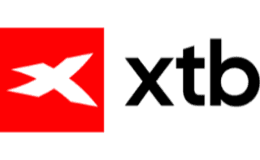All investing should be regarded as longer term. The value of your investments can go up and down, and you may get back less than you invest. Past performance is no guarantee of future results. If you’re not sure which investments are right for you, please seek out a financial adviser. Capital at risk.
What’s the best S&P 500 index fund?
Here are some of the best performing S&P 500 funds according to JustETF.
Note: We’ve added a link next to each of these funds, which takes you to a share trading app where you can sign up to invest in that S&P 500 fund.
| ETF | Icon | 5-year performance (to Jan. ’25) | 1-year performance (to Jan. ’25) | Link |
|---|---|---|---|---|
| Invesco S&P 500 (SPXP) |  | 105.91% | 27.36% | Invest Invest Invest Capital at risk |
| Xtrackers S&P 500 Swap (XSPX) | 107.48% | 28.50% | Invest Invest Invest Capital at risk | |
| HSBC S&P 500 (HSPX) |  | 106.40% | 28.57% | Invest Invest Invest Capital at risk |
| iShares Core S&P 500 (CSP1) |  | 103.02% | 26.69% | Invest Invest Invest Capital at risk |
| Vanguard S&P 500 (VUSA) |  | 105.75% | 28.37% | Invest Invest Invest Capital at risk |
| SPDR S&P 500 ETF (SPX5) |  | 105.53% | 28.41% | Invest Invest Invest Capital at risk |
As S&P 500 index funds all track the same group of stocks, the returns offered by different funds or ETFs should be fairly similar. When deciding on the best S&P 500 index fund, it’s therefore better to compare them based on the fees they charge, which is measured by Total Expense Ratio (TER).
The cheapest S&P 500 index fund is the Invesco S&P 500 UCITS ETF, which has a 0.05% total expense ratio (TER). This means if you invested £1,000, you’d be charged 50p in annual fees each year. This is followed by the iShares Core S&P 500 UCITS ETF and Vanguard S&P 500 UCITS ETF, which both have a 0.07% TER.
While the performance of different S&P 500 index funds shouldn’t diverge too much, there are some S&P 500 funds that have performed slightly better than others over time.
Platforms where you can invest in the S&P 500
These trading apps allow you to invest in companies within the S&P 500 directly or to invest in S&P 500 funds/ETFs.

Fractional shares
Get dividend payments

Fractional shares
5,400+ stocks/ETFs

Commission-free investing
Advanced trading tools

40,000+ stocks
Invest online or the ii app
The S&P is an index of the 500 largest listed companies in the US. It’s home to some recognisable brands, including many technology stocks, such as Twitter and Netflix.
The largest ten stocks in the index make up 21% of it, and the top four are all technology stocks: Microsoft, Amazon, Facebook and Alphabet. We’ve detailed how you can invest in the S&P 500 from the UK, the most popular S&P 500 index and exchange-traded funds (ETFs), and what else you need to consider.
Can I invest in the S&P 500 from the UK?
Yes, there are a number of ways you can invest in the S&P 500 from the UK. The S&P 500 is a stock market index that tracks the performance of 500 leading US companies that are listed on the stock exchange. This means you can’t directly invest in the S&P 500, but can buy stocks in the companies that make up the S&P 500 or buy an index fund, such as a mutual or exchange-traded fund that tracks the overall performance of the S&P 500 index.
What S&P 500 index funds can I buy in the UK?
There are more than 100 S&P 500 index funds listed on the LSE that you can invest in from the UK, and you’ll have access to even more if you have an account with a trading platform or broker that offers direct access to the US stock market.
The most popular S&P 500 index funds in the UK include:
- iShares Core S&P 500 UCITS ETF
- Vanguard S&P 500 UCITS ETF
- Invesco S&P 500 UCITS ETF
- Xtrackers S&P 500 Swap UCITS ETF
- SDPR S&P 500 UCITS ETF
- HSBC S&P 500 UCITS ETF USD
- Amundi ETF S&P 500 UCITS ETF USD
- Lyxor S&P 500 UCITS ETF
- Fidelity 500 Index Fund (FXAIX)
- Vanguard 500 Index Investor Share Class (VFINX)
- Schwab S&P 500 Index Fund (SWPPX)
- iShares S&P 500 Index Fund (BSPAX)
- T.Rowe Price Equity Index 500 Fund (PREIX)
- iShares S&P 500 Growth ETF (IVW)
- Portfolio Plus S&P 500 ETF (PPLC)
- Schwab U.S. Large Cap ETF (SCHX)
How to invest in the S&P 500
- Find an S&P 500 ETF, index fund or mutual fund. Some index funds track the performance of all 500 S&P stocks, whereas others only track a certain number of stocks or are weighted more towards specific stocks. You should select the fund that best suits your investment goals.
- Open a share-trading account. In order to invest in an S&P 500 fund, you’ll need to open a trading account with a broker or platform. Keep in mind that some index funds may only be available on certain brokerages or platforms. The providers in our comparison table below let you invest in US shares. We’ve listed some index funds below that are listed on the London Stock Exchange (LSE)
- Deposit funds. You’ll need to deposit funds into your account to begin trading. Some brokers may charge you deposit fees, or you may need to pay a forex fee in order for your pounds to be converted into US dollars.
- Buy the index fund. Once your money has been deposited, you can then buy the S&P 500 index fund. You’ll generally pay a small annual fee to invest in an ETF or index fund.
What is the UK equivalent of the S&P 500?
The S&P 500 tracks the performance of 500 of the largest companies on US stock exchanges, and is the most popular US stock index. The equivalent of the S&P 500 in the UK is the FTSE 100, which similarly tracks the performance of the 100 largest companies on the London Stock Exchange.
Like the S&P 500, the FTSE 100 is also used as a general yardstick to measure the relative health and performance of the UK stock market and wider economy.
What stocks are in the S&P 500?
The S&P 500 comprises 500 of the largest US companies by market capitalisation, which means it includes some of the most recognisable and popular stocks in the world. These include the following:
- Alphabet (GOOG)
- Amazon (AMZN)
- American Express (AXP)
- Apple (AAPL)
- eBay (EBAY)
- Facebook (FB)
- JPMorgan Chase (JPM)
- McDonald’s (MCD)
- Microsoft (MSFT)
- Netflix (NFLX)
- Nike (NKE)
- Royal Caribbean Cruises (RCL)
- Tesla (TSLA)
- Twitter (TWTR)
- Walt Disney Company (DIS)
Why should I invest in the S&P 500?
The S&P 500 features some of the largest and most successful companies in the world and has historically given investors a decent return on their investment.
If you only invest in stocks available on the London Stock Exchange (LSE), you’ll be limited in the number of stocks you can buy. Investing in an S&P 500 index fund or opening a trading account that gives you access to the US stock market will let you diversify your portfolio and open up the potential gains offered by US stocks.
How much does it cost to invest in the S&P500?
There are a couple of fees to keep in mind if you plan to invest in US stocks – the commission fee, which is the cost of carrying out the trade, and the foreign exchange fee, which is the cost of changing your money over to US dollars. Here are some of the costs of buying US stocks with some of the main providers:
| Platform | Fee for a US trade | Foreign exchange fee |
|---|---|---|
| Degiro | €0.50 (£0.43) + $0.004 per share | 0.1% |
| eToro | £0 | 0.75% |
| Freetrade | £0 | 0.45% |
| Hargreaves Lansdown | £11.95 | 1% |
| IG | £10 | 0.5% |
| Stake | £0 | 0.5% |
| Trading 212 | £0 | 0.15% |
| Fineco | $3.95 (£2.98) | 1% |
The most expensive part of buying US stocks is the foreign exchange fees. Compare the fees for the providers that have the lowest foreign exchange fee, even if they’re not commission free, to work out whether it might work out cheaper to go with another provider.
Compare S&P 500 trading platforms
Finder Score for trading platforms
To make comparing even easier we came up with the Finder Score. Costs, features, ease and range of investments across 30+ platforms are all weighted and scaled to produce a score out of 10. The higher the score the better the platform – simple.
Read the full methodologyAll investing should be regarded as longer term. The value of your investments can go up and down, and you may get back less than you invest. Past performance is no guarantee of future results. If you’re not sure which investments are right for you, please seek out a financial adviser. Capital at risk.
Pros and cons of investing in the S&P 500
Pros
- Access some of the largest US stocks
- Stocks on the S&P 500 tend to be well known and perform pretty well
- You can invest with index funds
Cons
- Not completely diversified — you should invest in worldwide stocks to diversify your portfolio a bit more
- Foreign exchange fees
Bottom line
Home to Disney, Netflix, Twitter and Tesla, the S&P 500 is made up of some of the largest technology companies. It’s understandable why investors want to get a look in! Take some time to consider how you want to invest – are there specific S&P 500 companies that you want to invest in, or are you looking to diversify with an S&P 500 index fund or ETF?
Make sure you consider the costs of investing in US stocks, as there will be a foreign exchange or currency exchange fee on top of any commission.
Read more on Share Trading
-
Best stock brokers in the UK
Search our directory of UK stock brokers partnered with the London Stock Exchange (LSE) and learn about how each of them operates.
-
InvestEngine promo codes for 2025
See if you can make your investment go even further with free-share, cashback or refer-a-friend offers from InvestEngine. Here’s what’s live right now.
-
Lightyear promo codes for 2025
See if you can make your money go further with free-share, cashback or refer-a-friend offers from Lightyear. Here’s what’s live right now.
-
Best day trading stocks
Find out how to spot some of the best day trading stocks available in the UK and abroad, along with tips for managing your investment portfolio on a day-to-day basis.
-
Best investment platforms paying high interest on cash
Some trading apps and platforms now offer competitive interest rates on uninvested cash.
-
Best trading apps in the UK (2025)
We’ve tested, analysed and scored trading apps to find the 10 best trading apps in the UK, who they’re best for and the pros and cons.
-
Best trading apps for beginners
We’ve reviewed the best online trading platforms in the UK and explained why they’re best suited to beginners, with pros and cons.
-
Best junior stocks and shares ISAs
A junior stocks and shares ISA account (JISA) is a tax-efficient way to save for your child’s future, here are the best options and how to compare.
-
Best investment trusts for 2025
We’ve put together a list of the best investment trusts of recent times, in terms of performance, income generation and popularity.
-
Best shares to buy now: Updated daily
Find out how to choose the best shares to buy now, see our list of the top 30 trending stocks today, and find out why they’re trending.
